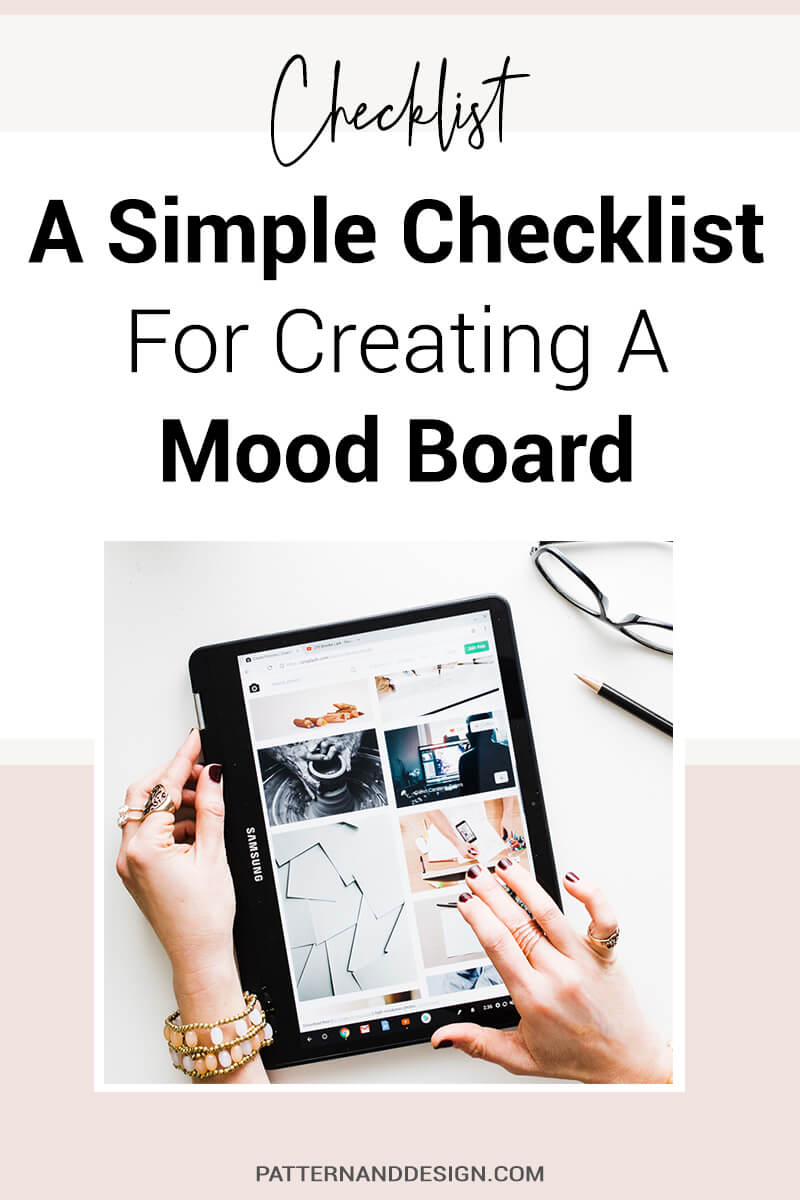learn about all things surface pattern design including the creative design process, being a successful creative entrepreneur & stepping into the mindset of a successful designer
welcome to the pattern design blog
blog
The
Categories
Popular
A Simple Checklist For Creating Your Next Mood Board
If you’re creative and interested in design, you will be always collecting inspiration. You probably have lots of magazine cutouts, bookmarked websites, blogs, and Pinterest boards but how do you use them when it’s time to design?
The answer is simple, create a mood board. Mood boards allow you to communicate your ideas and collate them together in one place. You should use them throughout the design process to refer to and make sure your designs are on track. What should you include on your mood board? I’ve created a simple checklist for creating your next mood board.
A Simple Checklist For Creating Your Next Mood Board:
1. Design Direction
Before you get started, you need to think about the theme and design direction for your mood board. Go through all your inspiration and find any images that are relevant to your theme that you’d like to consider using on your mood board.
2. Colour
As well as deciding the design direction, you also need to have an idea of the colour palette you’d like to use. This can be conveyed on your mood board through imagery or colour chips.
3. Orientation
Decide on the orientation of your mood board. Is it going to be portrait or landscape?
4. Layout
You can experiment with different layouts for your mood board. For example, are you going to create a structured mood board in a grid template or a collaged mood board?
5. Text
Will you include a title or other text? Text should be used sparingly e.g. a title or quote. You shouldn’t include large amounts of text such as sentences on your mood board. If you are using text, consider the font you choose. Try to select a font that fits in with your theme.
If you’re having trouble knowing how to start a mood board, you can learn step by step how to create mood boards, find inspiration and create your own mood board templates here.
6. Select images
From all of your inspiration, select the images you’d like to use. It’s important not to overcrowd your mood board so make sure you select enough images to convey your message but not too many otherwise your mood board will appear cluttered.
A tip: if you have more than one image that tells the same story then you should select the best image to represent that idea.
7. Focal Point
Make sure your mood board has a focal point so your eye can be drawn into one spot and then be allowed to move around the mood board.
8. Balance
Your mood board should be well balanced. Balance should include colour, texture, and size and can be achieved by placement of your images.
9. Format
How are you going to create your mood board? You can create your mood board by hand or on the computer in programs such as Illustrator, Photoshop or InDesign.
10. Physical Objects
You can consider adding physical objects to your mood board once it’s printed. Physical objects could be found objects, yarn, fabric or anything else that’s relevant to your colour palette or theme.
Once you’ve created your mood board, don’t forget to refer to it throughout the design process to keep you on track while designing.
Don’t forget, if you’re having trouble knowing how to start a mood board, you can learn step by step how to create mood boards, find inspiration and create your own mood board templates here.

Want to create another revenue stream by turning your art into surface pattern designs?
Get the free guide
Get my FREE Surface Pattern Design Starter Guide